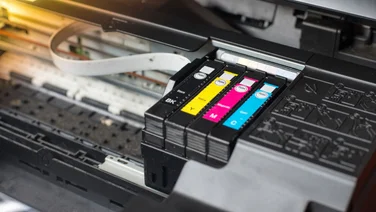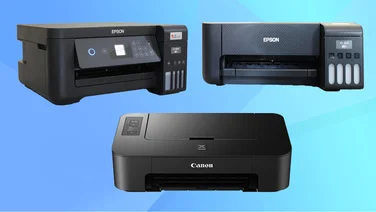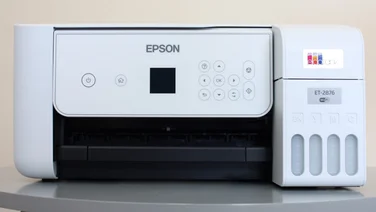To help us provide you with free impartial advice, we may earn a commission if you buy through links on our site. Learn more

Selfie might be word of the moment, but Canon’s been using it to sell photo printers for a decade or so. Like others before it, the Selphy CP910 is an extremely compact device designed to print postcard or credit-card size photos, or mini stickers. It supports wireless networking, has a colour screen and both a USB host port and SD card slot for making direct prints.
The CP910 is unusual in that it prints using dye sublimation rather than droplets of ink or grains of toner. In a dye-sub printer, a ribbon impregnated with solid dye is heated, turning the dye to a gas which solidifies again on the cool paper passing underneath. In three passes the printer lays down yellow, magenta and cyan to build up a finished image, then a fourth pass adds a clear protective coating. It’s a fast process and the results are completely free of grain, so it should be ideal for photos. However, disadvantages include a lack of sharpness when compared to a good inkjet print and less resistance to fading than prints from high-end photo inkjets using pigmented inks.

The CP910 couldn’t detect our 2.4GHz wireless network on channel 13, an unusual but legitimate choice, but it was easy to configure once we’d changed the channel on our router. You can connect it to a single PC via USB, although unusually for a printer it has a Mini-B rather than Standard-B port. While this is at the left, the power port is at the rear, right next to the slot which paper backs out of during printing: you need to route the power cord carefully to stop it fouling. Canon’s postcard paper is literally that (there are stamp and address guides on the back), but the neat cassette doesn’t have an orientation guide to make sure you get the photo the right way up in relation to them.
It’s always fascinating watching paper moving back and forth through a dye-sub while a picture materialises. This is a reasonably quick example, with six prints taking six minutes and seven seconds over a USB connection, six minutes 44 seconds over Wi-Fi, and five minutes, 50 seconds from an SD card.
Unfortunately the results are a bit disappointing, colours generally looking somewhat de-saturated, and sharp colour boundaries revealing a characteristic softness. Oddly given that this printer should be capable of producing 16.8 million colours, it seemed to run out of shades of blue when reproducing the sky in one of our test shots, allowing it to become banded and blocky toward one edge.
Canon sells ink ribbons and paper in bundles which print exactly 36 or 108 shots; the cost works out at about 22p per 6x4in photo. You’d get better prints for significantly less from an online service such as Snapfish.co.uk, but that said, this is a quick way to print photos at home.






